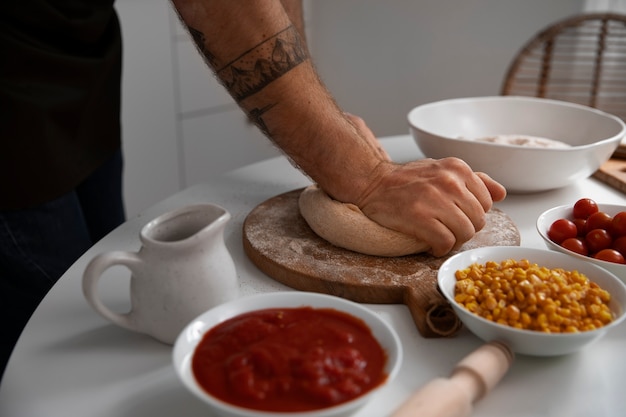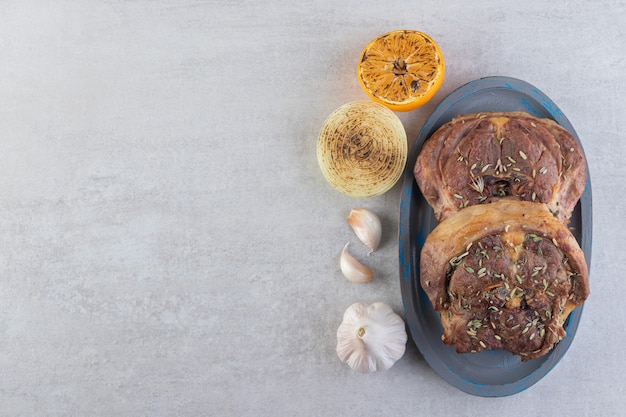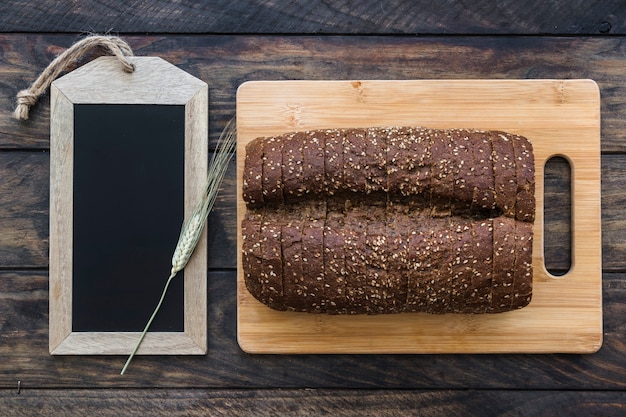You've got a gorgeous 2lb meatloaf ready to go in the oven, but you're staring at the clock, wondering how long you'll be waiting for that delicious dinner. Let me tell you, this isn't a quick-fix meal, and getting the timing right is key to a juicy, tender, and perfectly cooked loaf. I've been there myself, more times than I can count. Meatloaf is one of those seemingly simple dishes that can throw a curveball when it comes to cooking time. But fear not! We're about to dive into the ins and outs of meatloaf cooking, and by the time we're done, you'll be a meatloaf master.
This journey isn't just about throwing a lump of meat in the oven and hoping for the best. It's about understanding the factors that influence cooking time, from the size and shape of your masterpiece to the oven's temperament. I'm not just talking about a basic recipe here; we're going to explore tips and tricks for achieving the perfect texture, dealing with overcooked situations, and even transforming those delicious leftovers into something extraordinary. So grab a cuppa, get comfortable, and let's get cooking!
Part 1: Oven Temperature and Cooking Time - The Foundation of a Good Meatloaf

Understanding the Basics: It's Not Just About Heat
The oven temperature is like the fuel for your meatloaf journey. It determines how quickly the heat penetrates the loaf, and ultimately, how long it takes to reach that perfect internal temperature. As a general rule, a moderate oven around 350°F (175°C) is your best friend for a 2lb meatloaf. But remember, ovens have personalities. Some run hotter than others, and you might need to adjust your temperature based on your own kitchen's quirks.
Cooking Time Estimates: A Starting Point, Not a Set-in-Stone Rule
Let's get practical. For a 2lb meatloaf cooked at 350°F (175°C), here's a rough idea of what you're looking at:
- 1.5-2 hours: This is the usual time frame, but it's not an exact science. A well-shaped meatloaf will cook faster than one that's been crammed into a weird container, so be ready to check for doneness a bit earlier.
- Check for Doneness: This is where our hero, the meat thermometer, steps in. It's your ultimate guide to making sure that meatloaf is cooked through and safe to eat. Aim for an internal temperature of at least 160°F (71°C) before you even think about serving it.
Remember, these are just estimates. Your oven, your meatloaf, and even the weather outside can throw a wrench in the works. Don't be afraid to peek in and check the temperature. It's better to be safe than sorry, and nobody wants a raw center!
Part 2: meatloaf size and Shape - The Anatomy of a Perfect Loaf

How Size Matters: Bigger Isn't Always Better
The size of your meatloaf plays a crucial role in cooking time. A 2lb loaf is a good size for a family meal, but it's not a miniature snack! Think of it like a large piece of meat that needs time to cook thoroughly. The bigger the loaf, the more time it will take for the heat to penetrate the entire thing. It's like trying to heat up a whole cake versus a single slice - the bigger the item, the longer it takes.
Shape and its Influence: Think of Heat Flow
Now let's talk about shape. A wider, flatter loaf will cook more quickly than a tall, round one. This is because heat wants to travel in straight lines. A wider shape allows the heat to spread more evenly throughout the loaf, resulting in faster and more efficient cooking. A tall loaf is like a maze for the heat; it has to travel through twists and turns to reach the center, which takes longer.
Part 3: The Art of doneness testing - Knowing When It's Ready

The Importance of a Meat Thermometer: Your Kitchen's Best Friend
This is where the magic happens. A meat thermometer isn't just some fancy gadget; it's your culinary shield. It removes any guesswork and assures you that your meatloaf is cooked to a safe temperature. Think of it as a detective, sniffing out any hidden danger of undercooked meat.
Visual Clues and Doneness: A Sneak Peek Before the Reveal
While a meat thermometer is the ultimate authority, there are some visual cues that can give you a hint about the doneness of your meatloaf. It's like looking at a masterpiece before it's fully framed. Here's what to look for:
- golden-brown crust: This tells you that the outside of the meatloaf has been exposed to enough heat to develop a delicious crust. It's a good sign, but not a guarantee of doneness.
- No pink juice: When you poke the meatloaf with a fork, the juice should run clear. If you see any pink, it means the meat hasn't cooked through.
- Firm to the touch: Your meatloaf shouldn't be soft and jiggly, like a raw cake batter. It should feel firm and springy when you press it gently.
Remember, visual cues are just hints. They can point you in the right direction, but a meat thermometer is the only way to be certain. Always trust the thermometer; it's a culinary guardian angel.
Part 4: Tips for Achieving juicy meatloaf - Beyond Just Cooking
The Secret to a Moist and tender meatloaf: It's All About the Ingredients
We all love that mouthwatering, juicy meatloaf that melts in your mouth. It's the opposite of a dry, crumbly loaf that leaves you feeling disappointed. Let's unlock the secrets to achieving the perfect meatloaf texture:
- Don't overmix: Overmixing the meatloaf mixture is like squeezing the life out of it. It can make the meat tough and dry. Gently combine the ingredients until they're just mixed, and then leave it alone.
- Use a binder: Binders like breadcrumbs, oats, or crushed crackers are the meatloaf's secret weapon. They hold it together and add moisture, preventing it from falling apart.
- Add some fat: A bit of fat, like ground pork or bacon, is like a moisturizing cream for your meatloaf. It keeps it juicy and adds a delicious flavor.
- Wrap in bacon: If you want to go the extra mile, wrapping your meatloaf in bacon is a classic way to add flavor and moisture. It's a bit more decadent, but it's oh so good!
Part 5: Dealing with Overcooked Meatloaf - Saving a Culinary Disaster
Let's face it, even the best of us can overcook a meatloaf sometimes. It's a common culinary mishap, but don't despair! There are ways to salvage the situation and turn a dry loaf into something delicious.
Adding Moisture: The Rehydration Process
- Sauce it up: A rich, flavorful sauce is like a life preserver for a dry meatloaf. It adds moisture and covers up any dryness. A tomato-based sauce is a classic, but feel free to experiment with different flavors!
- Cover and simmer: If the meatloaf is just slightly dry, cover it with foil and simmer it in the oven for a few minutes. This will trap moisture and soften the texture.
Making the Best of the Situation: When It's Beyond Repair
If your meatloaf is really dry and beyond saving, don't throw it out! Crumble it up and add it to pasta sauce, chili, or even a casserole. It might not be the perfect meatloaf, but it can still be delicious!
Part 6: meatloaf variations: Stepping Beyond the Classic
Beyond the Classic Recipe: Exploring New Flavors
Who says meatloaf has to be the same old boring dish? It's like a blank canvas for your culinary creativity. Experiment with different flavors and ingredients to create a masterpiece that's uniquely yours.
- Herbs and spices: Get your hands dirty with a mixture of rosemary, thyme, and garlic. Or, get adventurous with a blend of paprika, cumin, and chili powder. The possibilities are endless!
- Cheese: Add grated cheese to your meatloaf mixture for a cheesy and delicious twist. Sharp cheddar, mozzarella, or even goat cheese - the choice is yours.
- Vegetables: Chop up some carrots, onions, or mushrooms and add them to your meatloaf mixture. It's a healthy and flavorful way to add some veggies to your meal.
- Fruit: This might sound unusual, but dried fruit, like cranberries or raisins, adds a surprising sweetness to your meatloaf. Just be sure not to overdo it!
Part 7: meatloaf leftovers: Transforming a Dish into a Feast
Turning Leftovers into a Feast: The Art of Culinary Alchemy
Meatloaf is a great dish for making leftovers. There are countless ways to transform a leftover meatloaf into delicious new meals.
- Meatloaf sandwiches: Slice up your leftover meatloaf and create hearty sandwiches. Add some lettuce, tomato, and your favorite condiment for a satisfying lunch or dinner.
- Meatloaf salad: Dice up the meatloaf and add it to a salad for a flavorful and filling meal. It goes well with greens, veggies, and a tangy dressing.
- Meatloaf pasta: Crumble the leftover meatloaf and add it to your favorite pasta sauce. It adds a boost of protein and flavor to your pasta dish.
- Meatloaf soup: Cut the leftover meatloaf into small pieces and add it to a pot of soup. It adds richness and substance to your soup.
Part 8: FAQs: Frequently Asked Meatloaf Questions
Q1: What if I don't have a meat thermometer?
You can try checking for doneness by poking the meatloaf with a fork. If the juice runs clear and the meatloaf feels firm to the touch, it's likely cooked through. But it's always safer to cook the meatloaf a little longer if you're unsure.
Q2: Can I freeze leftover meatloaf?
Absolutely! Wrap the leftover meatloaf tightly in plastic wrap and foil, and store it in the freezer for up to 3 months. To thaw, transfer the meatloaf to the refrigerator overnight. You can reheat it in the oven or microwave.
Q3: What can I use as a substitute for breadcrumbs?
If you don't have breadcrumbs, try oats, crushed crackers, or even finely chopped walnuts. These will bind the meatloaf together and add moisture. Just use a little less than the amount of breadcrumbs called for in the recipe.
Q4: Should I cover the meatloaf while it's cooking?
Cook the meatloaf uncovered for the first hour or so to let the top brown nicely. Then, cover it with foil to prevent it from drying out. But remove the foil for the last 15 minutes or so to let the top crisp up.
Q5: What are some tips for making a moist and flavorful meatloaf?
For the ultimate juicy and flavorful meatloaf, use high-quality ground meat, don't overmix the ingredients, add a binder, incorporate some fat, and consider wrapping it in bacon. Don't forget to cook it to a safe internal temperature of at least 160°F (71°C).
Part 9: Conclusion: The Art of Meatloaf Mastery
There you have it! You've now embarked on a journey of meatloaf mastery. You've learned the secrets to cooking a 2lb loaf that's cooked to perfection, juicy and tender. It's about understanding the balance of oven temperature, cooking time, and doneness testing.
So, the next time you're in the mood for a comforting and satisfying meal, give meatloaf a try. Don't be afraid to experiment with different flavors and ingredients. And most importantly, enjoy the process!
Happy cooking!
Everyone is watching

How to Cook Frozen Lobster Tails Perfectly: A Step-by-Step Guide
RecipesLobster. Just the word conjures up images of lavish meals, special occasions, and a taste of luxury. But let's...

Pigs in a Blanket Cooking Time: How Long to Bake for Perfect Results
RecipesAh, pigs in a blanket. Just the name conjures up images of those delightful little parcels of crispy pastry en...

Pork Fillet Cooking Time: How Long to Cook It Perfectly
RecipesPork fillet, or tenderloin as it's sometimes called, is a real favourite in our house. It's so versatile, and...

The Ultimate Guide to Cooking Delicious Frankfurters
RecipesLet's face it, we all love a good frankfurter. It's a classic, simple, and always satisfying. But let's be rea...

Wolf Meat Recipes: A Guide to Cooking Wild Game
RecipesLet's be honest, you don't see wolf meat at your local butcher shop every day. It's a bit of a wild card, but ...
